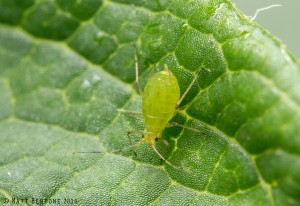(Another) Unexpected Aphid in Strawberries
go.ncsu.edu/readext?279325
en Español / em Português
El inglés es el idioma de control de esta página. En la medida en que haya algún conflicto entre la traducción al inglés y la traducción, el inglés prevalece.
Al hacer clic en el enlace de traducción se activa un servicio de traducción gratuito para convertir la página al español. Al igual que con cualquier traducción por Internet, la conversión no es sensible al contexto y puede que no traduzca el texto en su significado original. NC State Extension no garantiza la exactitud del texto traducido. Por favor, tenga en cuenta que algunas aplicaciones y/o servicios pueden no funcionar como se espera cuando se traducen.
Português
Inglês é o idioma de controle desta página. Na medida que haja algum conflito entre o texto original em Inglês e a tradução, o Inglês prevalece.
Ao clicar no link de tradução, um serviço gratuito de tradução será ativado para converter a página para o Português. Como em qualquer tradução pela internet, a conversão não é sensivel ao contexto e pode não ocorrer a tradução para o significado orginal. O serviço de Extensão da Carolina do Norte (NC State Extension) não garante a exatidão do texto traduzido. Por favor, observe que algumas funções ou serviços podem não funcionar como esperado após a tradução.
English
English is the controlling language of this page. To the extent there is any conflict between the English text and the translation, English controls.
Clicking on the translation link activates a free translation service to convert the page to Spanish. As with any Internet translation, the conversion is not context-sensitive and may not translate the text to its original meaning. NC State Extension does not guarantee the accuracy of the translated text. Please note that some applications and/or services may not function as expected when translated.
Collapse ▲We wrote last fall about our surprise in finding, Chaetosiphon minor, in garden strawberries near our lab. Our continuing investigations this spring into “common” NC aphids in strawberries has led to the discovery of another unexpected aphid. We received a call from the staff at the Central Crops Agricultural Research Station in Clayton, NC letting us know they found some aphids on strawberries on the plots next to our research plots. Upon bringing them back to the lab, Alejandro Merchan, our aphid-researching graduate student, and Matt Bertone at the NC Plant Disease and Insect Clinic determined the aphids to be Rhodobium porosum, the yellow rose aphid.
As its name implies, the yellow rose aphid is found more frequently in association with ornamental roses than strawberries, but has been occasionally noted on strawberries as far back as 1901. It has been shown to vector strawberry crinkle cytorhabdovirus and strawberry mottle virus, but it is not nearly as well documented a virus vector as the strawberry aphid, Chaetosiphon fragaefolii. Yellow rose aphids spend their whole lifecyle on the same type of host plant and alternate between generations of parthenogenically-reproducing (self-cloning) non-winged females and sexually-reproducing winged males and females.

The coloration of the yellow rose aphid ranges from yellow to spring green, like these aphids from Clayton, NC.
Specific management recommendations for yellow rose aphids in strawberries are not established, so for now, the species should be managed similarly to other strawberry-infesting aphids. The fact that we keep finding “uncommon” aphids in strawberries might mean that a re-evaluation of the NC strawberry-infesting aphid complex is in order. We will continue to survey for unexpected species.
More Information
What to watch for: Aphids in Strawberries – NC Small Fruits and Specialty Crops IPM Blog


